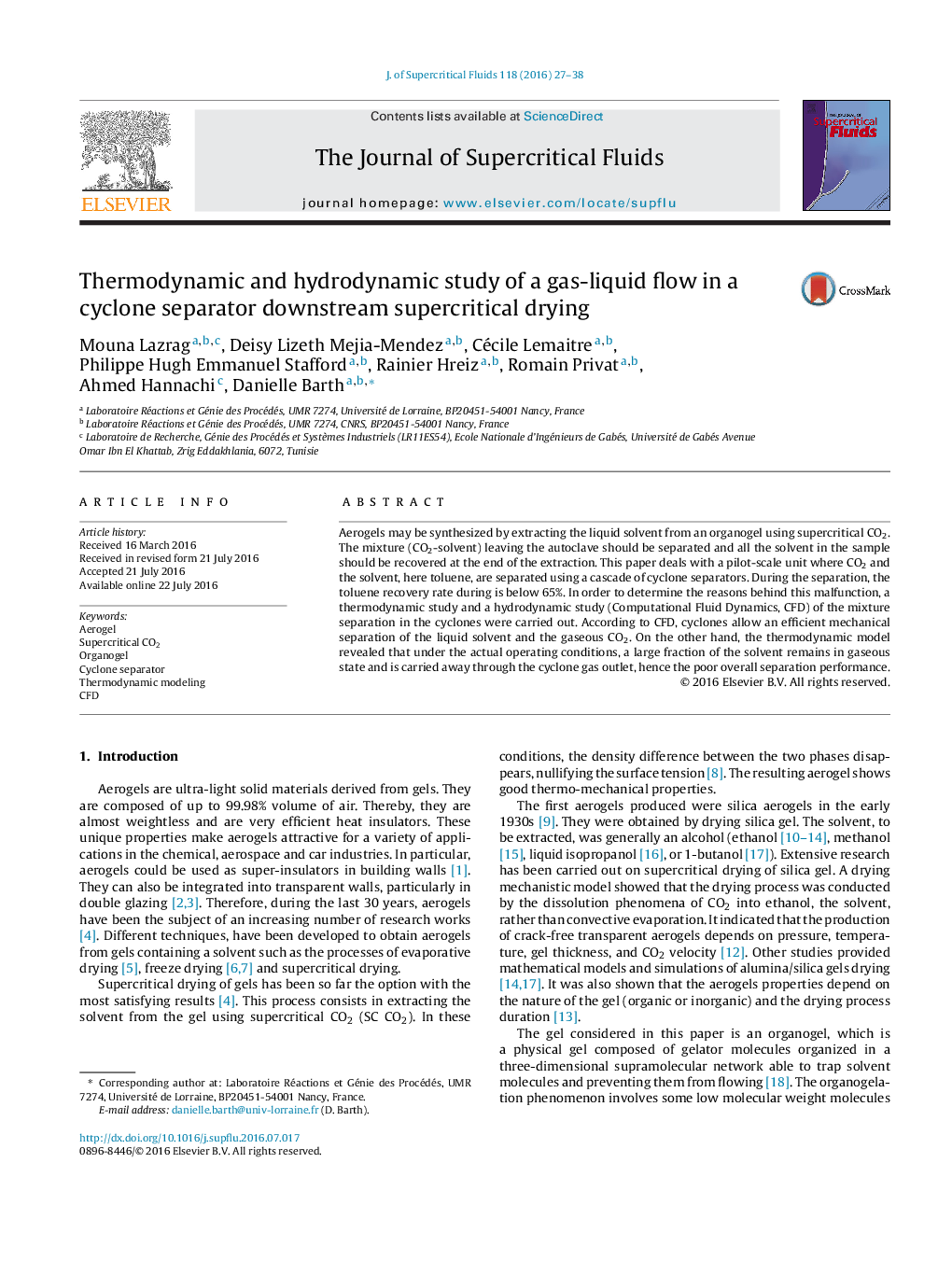| Article ID | Journal | Published Year | Pages | File Type |
|---|---|---|---|---|
| 343516 | The Journal of Supercritical Fluids | 2016 | 12 Pages |
•Recovery of a solvent, toluene, during the supercritical organogel drying process.•Hydrodynamics study of a gas-liquid flow, CFD modeling: single phase and biphasic system.•Thermodynamic modeling by PRO/II: poor recovery rate in agreement with the experimental results.
Aerogels may be synthesized by extracting the liquid solvent from an organogel using supercritical CO2. The mixture (CO2-solvent) leaving the autoclave should be separated and all the solvent in the sample should be recovered at the end of the extraction. This paper deals with a pilot-scale unit where CO2 and the solvent, here toluene, are separated using a cascade of cyclone separators. During the separation, the toluene recovery rate during is below 65%. In order to determine the reasons behind this malfunction, a thermodynamic study and a hydrodynamic study (Computational Fluid Dynamics, CFD) of the mixture separation in the cyclones were carried out. According to CFD, cyclones allow an efficient mechanical separation of the liquid solvent and the gaseous CO2. On the other hand, the thermodynamic model revealed that under the actual operating conditions, a large fraction of the solvent remains in gaseous state and is carried away through the cyclone gas outlet, hence the poor overall separation performance.
Graphical abstractFigure optionsDownload full-size imageDownload as PowerPoint slide
